The GLP-1 agonist semaglutide, brand name Ozempic & Wegovy, are all the rage when it comes to weight loss.
Celebrities like Kim Kardashian and Elon Musk are reported to have used it to shed some pounds, and it is getting a ton of media attention.
But what exactly is GLP-1 agonist, and is it the miracle weight loss drug that the media is making it out to be?
Let’s examine this class of drugs in detail and whether or not it is an appropriate use for you.
What Is a GLP-1 Agonist?
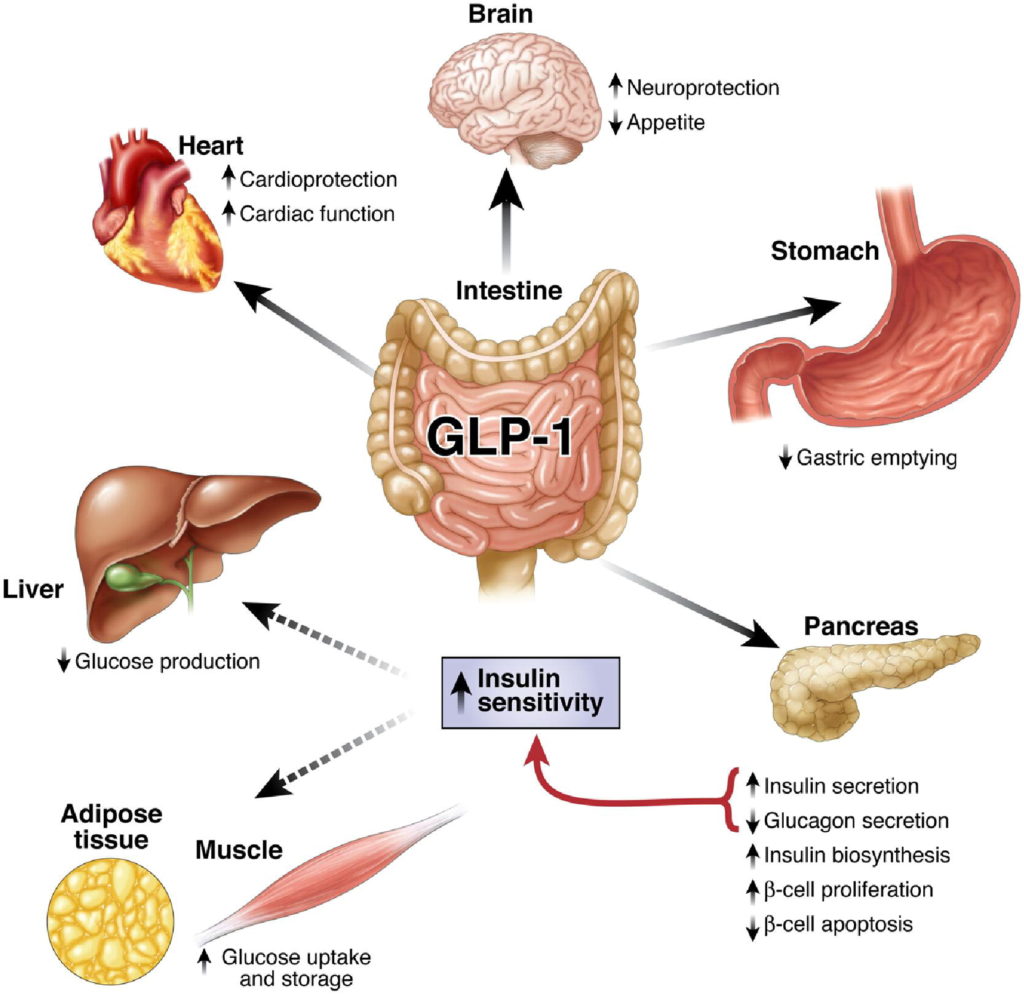
Before you can understand why Ozempic & Wagovy are used for weight loss, it is essential to understand what a GLP-1 agonist is in the first place.
GLP-1(glucagon-like peptide) is a hormone made by your body that plays a key role in linking the absorption of nutrients from the gastrointestinal tract with pancreatic hormone secretion.
GLP-1 exerts its primary effect by stimulating the release of insulin.
Insulin is the hormone that allows glucose to enter the cells in your liver and muscle.
GLP-1 also slows down gastric emptying.
So when you consume a meal, GLP-1 stimulates the release of insulin, which takes the glucose from your meal and stores it in the appropriate place (muscle + liver cells.)
An “agonist” is simply a drug or a substance that binds to the same receptor on a cell and causes the same response of the substance that would normally bind there.
Your body makes GLP-1.
So if you inject a GLP-1 agonist – even though your body did not make the substance- it will bind to the same GLP-1 receptor.
The substance will have the same effect that endogenous GLP-1 would have.
And as I mentioned above, GLP-1:
1.) Stimulates insulin release
2.) Slows gastric emptying
Type 2 Diabetes & GLP-1
Ozempic (semaglutide), a GLP-1 agonist, was first approved for treating type 2 diabetes.
You might already know that type 2 diabetes is a disease characterized by dysregulated glucose homeostasis.
Type 2 diabetics are insulin resistant, which means insulin no longer does the job it is supposed to do in their body (allow glucose to enter the cell).
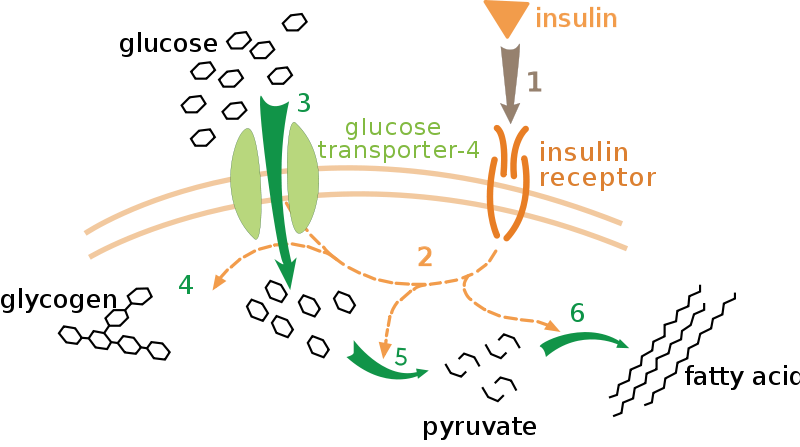
If glucose can’t enter the cell, it ends up in the blood plasma.
Hence, people with type 2 diabetes have chronically elevated blood sugar.
When you give a person with diabetes a GLP-1 agonist like Ozempic, it helps them release insulin and store glucose where it is supposed to be stored.
It is incredibly effective at lowering hemoglobin A1C, a biomarker for average blood glucose.
Ozempic & Weight Loss
Although the drug was not originally approved for weight loss, a major observed side effect of those taking Ozempic for type 2 diabetes was reduced body weight.
This then led to the 2021 study, which showed that 50% of participants on semaglutide lost 15% of their body weight, and a third of people lost 20% of their body weight!
This number is staggering if you consider that a 200lb individual would have lost 40 pounds over 68 weeks.
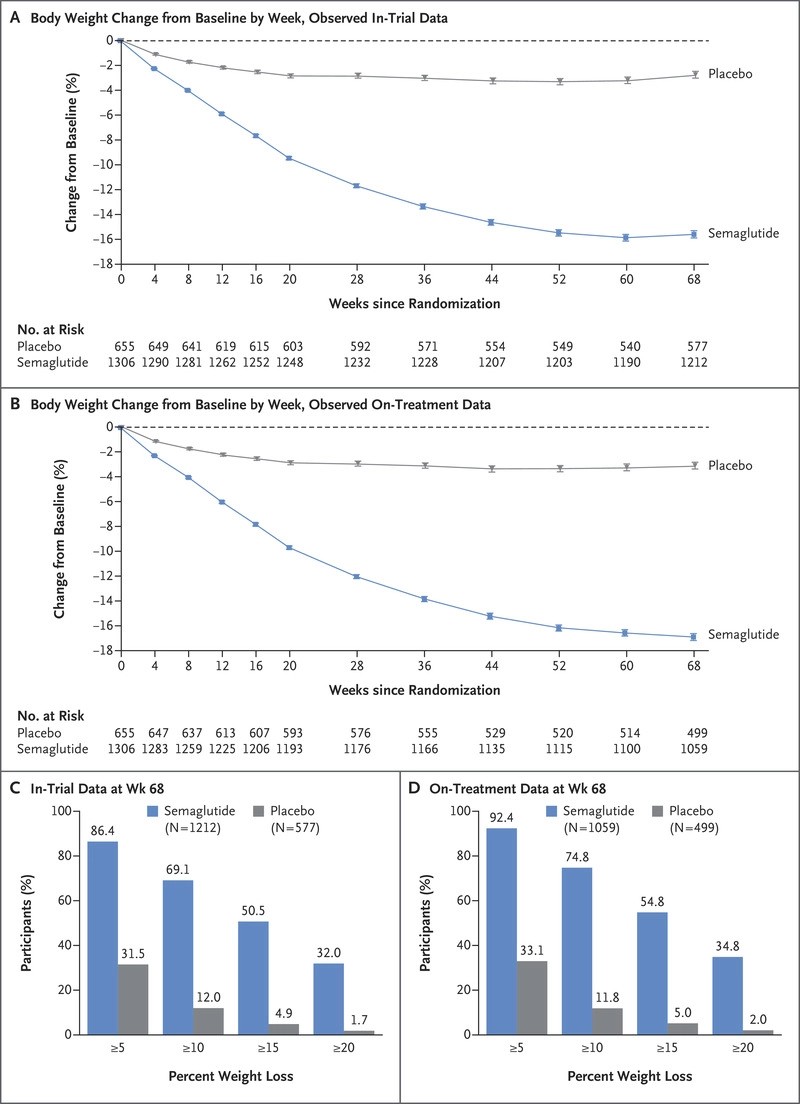
So What’s The Downside?
The trial data clearly shows that semaglutide causes a drastic reduction of overall body weight and also improves Hemoglobin A1C levels.
So what’s the downside?
It sounds like a miracle drug, right?
Well, not so fast.
Here is a list of the common side effects and the percentage of those who experienced them.
Nausea: 44%
Diarhhea: 31%
Vomiting: 25%
Constipation: 23%
Headache:15%
Nasopharyngitis: 21%
Dyspepsia: 10%
Abdominal Pain: 10%
Many of these side effects are transient, so there is some hope there.
However, the most concerning aspect to me is the effect on lean muscle tissue.
Lean Muscle Tissue Loss & Middle Age
The primary demographic I coach is middle-aged individuals.
They come to me because they have started noticing age-related changes in their physique, physical abilities, and health.
Some of these changes are related to body composition, such as increased body fat and decreased muscle mass.
Other significant negative age-related changes include increases in blood pressure, blood sugar, and cholesterol.
Of particular concern for middle-aged individuals, is their rate of lean muscle tissue loss.
Believe it or not, you lose about 1%-2% of your muscle mass each year after age 50.
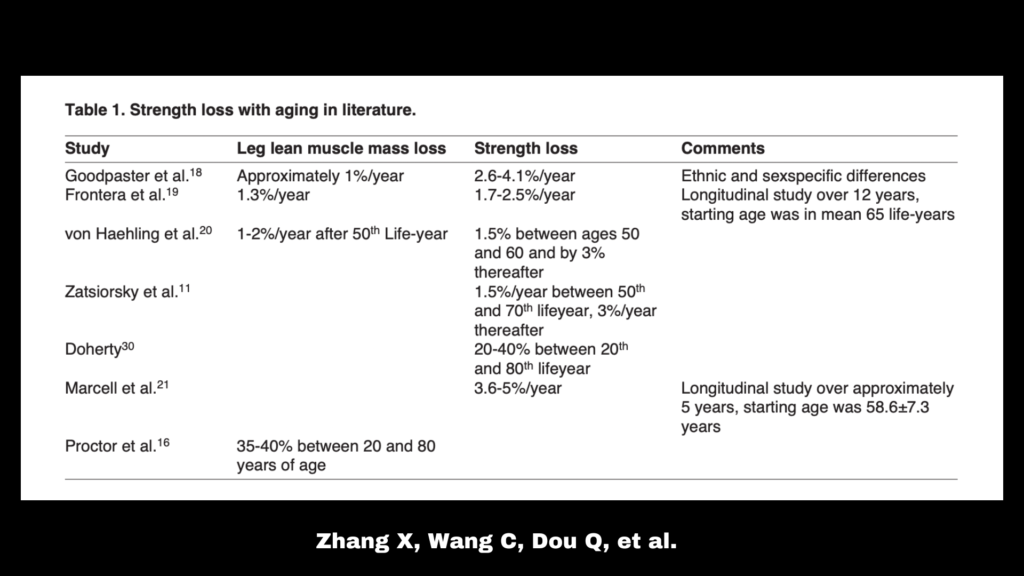
The effects become even greater as you get older.
Sarcopenia, age related muscle loss – is strongly associated with all-cause mortality.
In fact, this meta-analysis showed a 60% increase in mortality compared to those without sarcopenia!
So you can assume that I am absolutely maniacal about getting my clients to preserve as much muscle mass as they can.
We implement strategies around gaining lean muscle tissue through carefully crafted nutrition and strength programs.
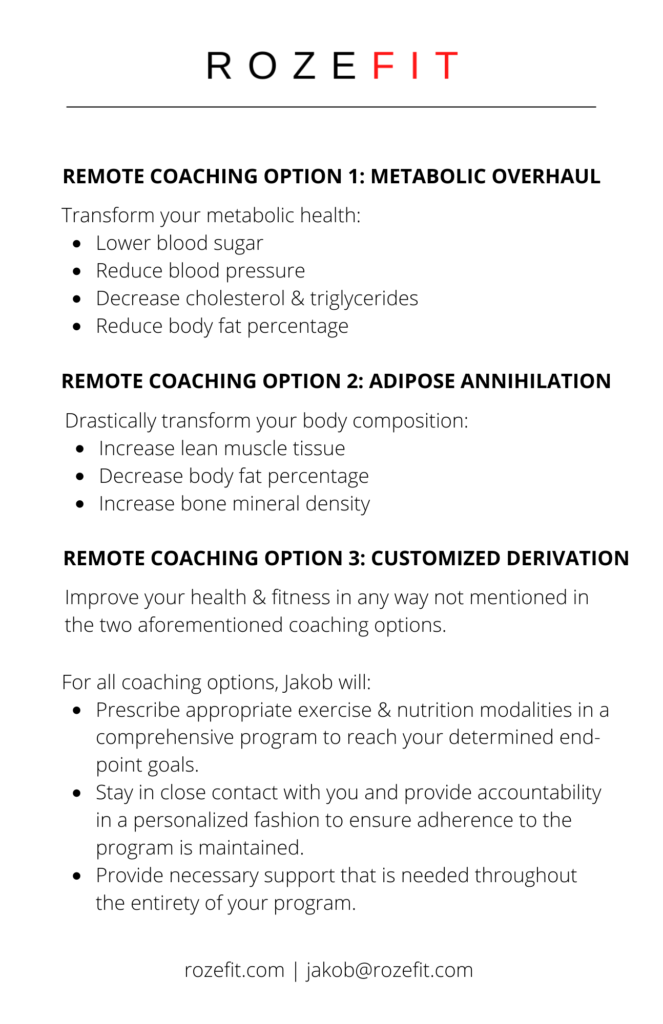
Lean Muscle Tissue Loss & Ozempic & Wegovy (Semaglutide)
And this brings us to the problem with the GLP-1 agonist Ozempic & Wegovy (Semaglutide).
The FDA has focused its primary outcome on total body weight for these trials.
But this says nothing about the distribution of fat loss vs. muscle loss.
While it is true that during any diet, one can expect some degree of muscle loss, we don’t exactly know how much muscle loss occurs with these drugs.
So if a 200lb individual lost 20lb on one of these drugs, and 17lb of that weight was lean muscle tissue – we would undoubtedly have a problem.
The only data that has looked at this is from a small subset of patients in the Step 1 Trial.
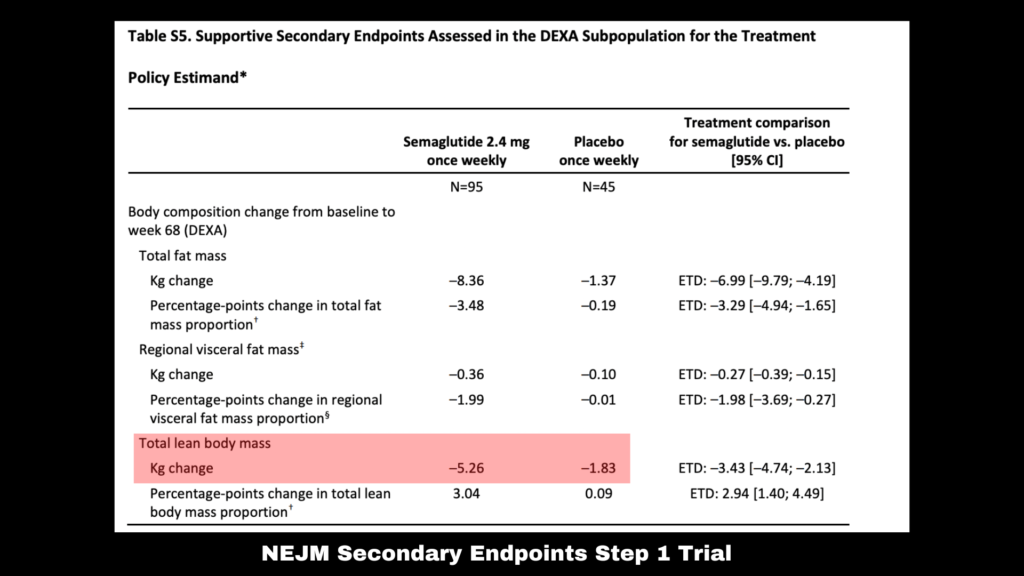
About 140 patients were surveyed using DEXA before and after.
A DEXA scan is the gold standard when it comes to assessing body composition.
It gives you a breakdown of fat mass, visceral fat mass, lean muscle mass, and bone mineral density.
It’s a great tool, and I have all my clients get one before we start a program.
Then periodically throughout their program, we conduct them to assess progress.
Back to the trial data.
Of the 140 patients surveyed, there was a mean fat loss of 8.36kg and 5.26kg of lean mass.
That is certainly NOT an insignificant amount of lean muscle tissue loss.
When implementing a fat loss strategy through diet and exercise with my clients, I want to minimize as much lean muscle tissue loss as possible.
So if they lose 20lb of total body weight, I want them to lose no more than 5lb lean tissue.
Even if fat loss is the primary goal, I want to minimize as much muscle loss as possible.
And we augment that quantity of muscle loss through appropriate protein intake and other strategies.
Should You Use Ozempic or Wagovy?
I feel that the unknown risks of muscle loss do not warrant using the drug for moderate weight loss.
I’m talking about someone wanting to lose 15lb to look better in their bathing suit.
Now for the person who is 50lb overweight, there might be a case for its use.
Obesity is undoubtedly one of the greatest risk factors for a host of metabolic diseases such as cardiovascular disease, cancer, and diabetes.
And if it means losing some muscle mass in the process to get the individual back to a normal body weight, then so be it.
But I don’t believe these are miracle drugs that should be used by just anyone trying to lose weight.
And if you decide to use these drugs, please get a DEXA scan and track your lean muscle tissue loss throughout the process.
You might want to implement mother damage control strategies as well like increased protein intake to preserve lean tissue.
You will also want to engage in a structured strength training program to preserve lean tissue and even gain some lean tissue to offset the loss from the semaglutide.
Reach out to me and I will coach you through a strategy!
jakob@rozefit.com
I look forward to hearing from you.

